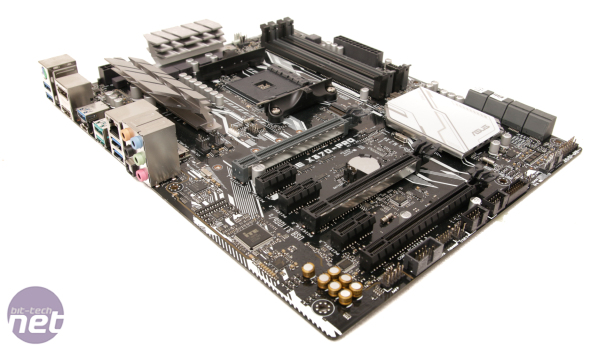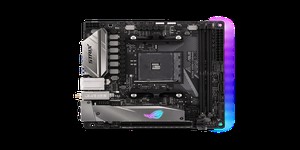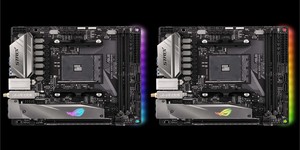Performance Analysis
The Asus Prime X370-Pro performed on par with the best results on test and it’s clear that Asus has been working on its BIOSes given the slight performance advantages over the more expensive Crosshair VI Hero. Overall, there wasn’t much in it – even the B350 chipset-equipped Gigabyte AB350-Gaming 3 managed to push our Samsung 960 Evo to its limits in the M.2 speed tests so it’s fairly clear that near stock speeds, you’re not really gaining anything by opting for an X370 chipset board apart from a few extra ports.
Click to enlarge
That said, Asus has clearly tweaked the audio on the Prime X370-Pro as it had a clear lead over the cheaper Gigabyte board in dynamic range and noise levels. On the flip side, the Crosshair has better audio still; audio performance seems to be the one area you’ll see significant differences between boards as you move between price points.
Once overclocked the Prime X370-Pro was able to offer massive increases in performance, especially in multi-threaded tests thanks to all eight cores hitting a little over 4GHz. Our fairly standard Noctua 120mm cooler was able to keep the CPU temperature below 80°C, too.
Click to enlarge
Conclusion
We’ve obviously covered a fairly large price range of boards so far, from £120 up to £250, but the picture that emerges is that Ryzen is ripe for budget overclocking, while mid-range and high-end boards do offer more useful features and perform better on occasions too. For a typical budget-orientated user who prefers to put that extra cash into a bigger SSD or faster graphics card, B350 chipset boards are quite compelling and are much cheaper than their Intel counterparts.
Stepping up and spending another £40 or so to the X370 chipset won’t net you much in terms of performance – perhaps better audio performance as well as the ability to use more SATA devices concurrently with a PCI-E M.2 SSD in situ. We’d certainly feel more comfortable applying a decent 24/7 overclock to the Asus Prime X370-Pro than the Gigabyte AB350-Gaming 3, plus the former has more SATA ports, better audio, more fan headers, additional USB ports and a slightly better layout, as well. In addition, Asus’ EFI remains superior to Gigabyte’s in all areas except for fan control, and similarly, Asus has the edge in terms of Windows software in most, but not all, areas.
We actually like the design of the board. It looks a bit more grown up than the ROG Strix models in the Intel Z270 range that cost about the same and the RGB lighting is very capable yet subtle. Thanks to some sterling work by Asus on the BIOS front, this is now right up there with the most stable AM4 boards we’ve tested so far, which is good considering the large amounts of reports of end users having problems - just make sure you grab the latest version.
The short story, then, is that if the budget your top priority, then the Prime 370X-Pro isn’t perhaps the best option. If, however, you need those extra USB ports, available SATA ports and want to build a high-end system with plenty of motherboard control for fans and adequate cooling for a hefty overclock, then it makes for a much better-value option than the Crosshair VI Hero and Gigabyte Aorus X370-Gaming 5.


MSI MPG Velox 100R Chassis Review
October 14 2021 | 15:04











Want to comment? Please log in.